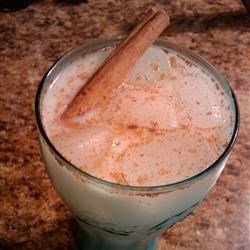 Untitled
Untitled
 Salvadorean Pupusas With A Side Of Slaw And Tomato Dipping Sauce
Salvadorean Pupusas With A Side Of Slaw And Tomato Dipping Sauce
A pupusa is a stuffed corn-tortilla, usually served with a spicy coleslaw called curtido. This recipe makes both. Pupusas originated in El Salvador, but imigrants have taken the dish to other Central American countries and beyond. Pupuserías, places where pupusas are sold and/or eaten.
Pupusas are hand-made and thick. Like all corn tortillas, they are made using corn masa. They are stuffed with one or more of the following:
* cheese (queso) (usually a soft Salvadoran cheese called Quesillo)
* fried pork rind (chicharrones)
* chicken (pollo)
* refried beans (frijoles refritos)
* queso y Loroco (loroco is a shrub flower bud from Central America)
There is also the pupusa revueltas (with mixed ingredients of cheese, pork, and beans). Pupusas are usually served with curtido and tomato sauce. They are eaten with the fingers.
Preparing the dough
There are different brands of corn masa to make the dough. MASECA, which can be found in most large American supermarkets in the international section, is one of them but there are others. Follow the instructions on the bag for making tortilla dough, and make as much dough as needed. (One pupusa uses about as much dough as two tortillas.) Once the dough has been prepared, set it aside while you prepare the filling.
1 cup water
2 cups masa harina
Three Fillings
Cheese
* 3 cups of shredded cheese (use hard and cream cheese mixed together; you can mix frying cheese, mozzarella and ricotta
* 3 or 4 tablespoons of heavy cream
* 1/2 to 1 cup of Loroco (this will be hard to find in the U.S. So you can use very finely chopped green peppers or scallions instead)
* salt to taste
o Or to avoid all these complications, try find a specialty store and buy queso con loroco( you won't get the authentic flavor from a pupusa if you use American ingredients)
Make a paste with these ingredients. To avoid the paste leaking, it should not be too soft.
Chicharron (Pork Rind Filling) [YEA!]
* 1 cup cooked bacon (cooked with garlic, see below).
* 4 - 5 tomatoes
* 1 green pepper
* Salt to add taste.
Cook bacon with some garlic (optional). Set fat aside but do not discard. Once cooked, grind bacon with the tomatoes, 1 green pepper, and salt to taste. Mix with some of the bacon fat until it has a soft consistency
[edit] Revueltas
Ground and fried beans (they can be canned or prepared from your favorite recipe).
When filling the pupusas add beans, chicharrón and cheese (or combine two of the three).
Making the pupusas
With two tablespoons of dough make a ball using your hands and later clap your hands until you make a round, thin (1/8 of an inch thick) tortilla. Continue making more tortillas this way. Put filling over one tortilla, cover with another and push down the sides to close them. This is the "beginners" method.
People who have experience do it this way: make a ball with the dough. Insert your thumb in the ball and make a hole in the center. Fill that hole with the filling, close the hole by pushing the dough on the sides up. Clap your hands carefully so that the filling doesn't come out and flatten the ball.
Cook on a slightly greased griddle, pan or electric pancake griddler and cook over low-medium heat (325-350°F) first one side, then the other until they are cooked. Each side will be ready when it no longer sticks to the pan (depending on the thickness of the tortillas, this might take 4 minutes or more per side).
Pupusas are topped with pickled cabbage and tomato sauce.
Curtido (pickled colesaw)
* chopped cabbage that has been quickly passed through boiling water
* medium onion, sliced
* carrot, finely shredded
* cooked green beans, not too soft (optional)
* beets (optional)
* horseradish (optional).
* red pepper, finely chopped (optional)
* vinegar or lime juice
* water
* 1 teaspoon oregano
* salt to taste
In a glass or plastic jar with wide opening mix all the ingredients. Add vinegar and water to taste. Mix with a wooden spoon (never metal). Put the mix in the refrigerator and let it rest for a week so that the ingredients pickle.
Salsa Roja
Ingredients
* Olive oil -- 3 tablespoons
* Onion, chopped -- 1/4 cup
* Garlic, chopped -- 1 clove
* Serrano or jalapeño chile pepper, chopped -- 1
* Tomatoes, peeled, seeded and chopped -- 2 cups
* Dried oregano -- 2 teaspoons
* Salt and pepper -- to taste
* Cilantro (optional), chopped -- 1/4 cup
Method
1. Heat the oil in a saucepan over medium flame. Add the onion, garlic and chile and sauté for 2 to 3 minutes, or until the onion is translucent.
2. Stir in the tomatoes and oregano and simmer for about 10 minutes. Remove from heat and cool a bit.
3. Puree the tomato sauce in a blender until smooth, adding a little water if needed. Add salt and pepper to taste, stir in cilantro if using and serve.






